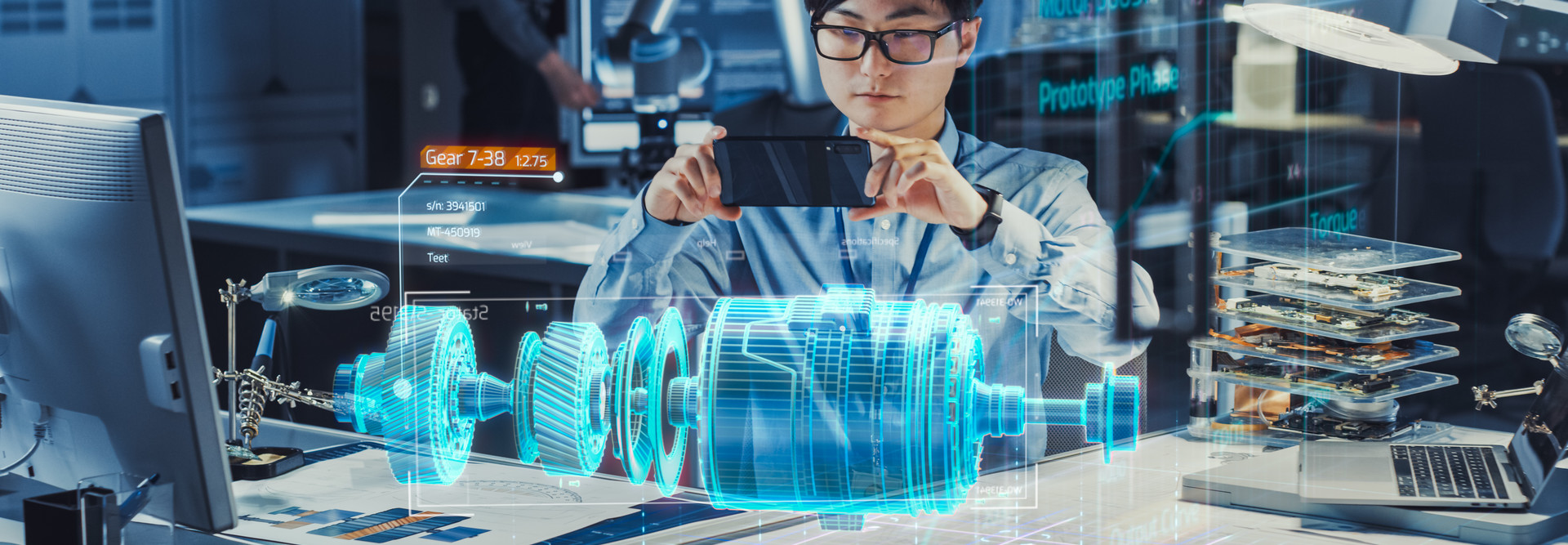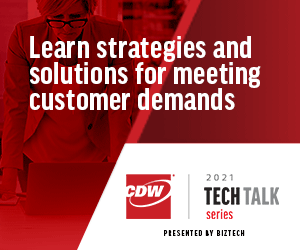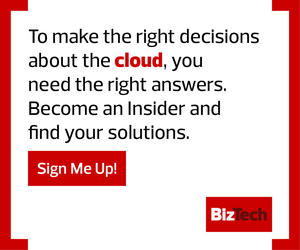At the beginning of 2020, who could’ve predicted the number and scale of changes we’d be experiencing with how and where we work? The pandemic and the IT decisions made in response to it sent many people away from the office and required them to adjust to work processes that include virtual experiences and multiple devices.
While these circumstances initially seemed like major obstacles, they’ve evolved to be seen as a benefit by many employees who have enjoyed the flexibility remote work offers. Employers, in turn, are discovering that such flexibility is becoming a serious expectation for workers. According to a recent report by Accenture, onsite work life will need to be reimagined for any organization that hopes to succeed.
Gary Radburn, director of virtual and augmented reality solutions at Dell, joined CDW’s Tech Talk webcast to offer insight on how work is evolving and how technology innovations will factor into those changes.
WATCH THE WEBCAST: Unlock the exclusive Insider video to learn more about the benefits of a dynamic infrastructure.
Four Stages of Evolution Following the Onset of the Pandemic
Radburn said business and their customers experienced four distinct phases in responding to the pandemic and the way it changed work as we knew it.
“The first stage was, quite frankly, abject panic, when we started going, ‘OK, how can we maintain productivity with our workforce?’ It was, ‘What’s not nailed down inside of the office, and what can I put into the trunk of a car?’ You then take that equipment back home, you then plug it back in, you put it into your network at home, and then you continue doing the work on the local data inside of that,” Radburn said.
The realities of life that invaded home offices brought on a second stage described by Radburn. “Now all of a sudden, it’s not as small as you remember it being back in your open-plan office. Having all these wires now inside of your house, you’ve potentially got your kids running around, they’ve got their beverages of choice in hand, they trip over the wires, the beverage goes over your electrical equipment. You try and log a call, but nobody can visit you because of social distancing. So, that becomes a little bit of a nightmare. That led us on to stage two. Stage two is mobility.”
When workers began working at home with machines Radburn described as being “as powerful as the ones that you would use under your desk” at the office and started having access to all the data inside their organizations, security became a major issue. “You’re now losing control over your data, and whilst it was great for getting people up and running, how can we actually manage that data effectively to ensure that our IP doesn't leak out? That leads us on to stage three, which is when we’re now remoting,” Radburn said.
WATCH: Learn more about building a secure future in the age of remote work.
Using a system at home that connects through a remoting protocol, Bradburn said, allows workers to interact with their workstations as if they were at the office. “You’re using a smaller-powered device, perhaps your home PC that you use for your internet shopping or a gaming PC that you might have. You can have that as your window onto your work world. With the information actually being stored back in the office, it never actually leaves the premises. All that’s coming across to you are pixels.”
Once you’ve locked down a security system that can protect your data, Radburn continued, “you’re really only limited by your distance from the office and the latency that actually introduces to that endpoint. We then move to stage four. Stage four is consolidation in the data center. We’ve now got all of those workstations back in the office, and we’ve got no people in the seats. Why are we going to actually have office space and air conditioning units that are generating cost in empty space when we could actually move those workstations or clients back into the data center and consolidate those so we can virtualize?”
Register below for an upcoming CDW Tech Talk, held Tuesdays at 1 p.m., to hear from IT experts live.
How Virtual and Augmented Reality Can Enhance Remote Work
Radburn said that Dell is not planning to fully return to the office and will be embracing the possibilities of remote work. He acknowledged the challenges with managing and training employees remotely, but he also highlighted the potential of innovative technologies such as virtual reality and augmented reality as tools for those tasks.
“Here at Dell, we’ve democratized the systems. Before, you used to have to have a really expensive rig to be able to drive a VR headset. That has now been reduced in price along the years. They’re now much more affordable and accessible, and we’re seeing that really ignite enterprise into how you can use that in your commercial environment,” Radburn said.
“The learning inside of a VR headset has been proven to be more beneficial than an audiovisual presentation,” he continued. “Inside of VR, 75 percent of what you’re seeing and doing actually comes in. It's a great learning medium for transmission of information, and I think that’s really driving the innovations that we’re seeing in the landscape.”
One of the greatest advantages Radburn sees in the use of VR in the workplace is a sense of presence. “As human beings, we love microexpressions, we love face-to-face contact. We’re losing a lot of that inside of conference calls and whatever else, and people are starting to get that fatigue that people talk about. If we can actually enable people to interact in different ways, then we start to get that engagement again as well.”
WATCH: Learn about the challenges ahead as companies consider a return to the office.
Radburn mentioned that Dell is partnering with HTC to use the company’s headsets on a platform called HTC SYNC Manager. “We’re actually using that for conference meetings. You can actually set up a conference room in 3D. It doesn’t necessarily have to be a boring four walls; you can do it with a vista that looks out onto the ocean with bridges and whatever else,” he said. “And if you’ve got things like eye-tracking going on as well, you can actually see where people are looking. You can actually see that people are engaged.”
AR and VR Are Scalable for Many Industry Uses
Radburn spoke with excitement about the scalability and accessibility of AR and VR. “The whole thing about VR is it’s really scalable. You can get headsets now for a couple of hundred dollars, or there are headsets out there that are in five figures, depending on what you want to do. Some headsets actually incorporate VR and AR.”
He explained the difference between the two technologies by saying that VR is everything that’s computer-generated. AR, on the other hand, enhances existing computer imagery by superimposing images on top of it.
“When we’re starting to see people using VR, it’s across every single industry. I mean that completely: There is no vertical out there, whether it be media or entertainment, whether it be construction, whether it be healthcare, whether it be education — all of those different areas are using VR for engagement,” Radburn said.
Strategic Partnerships Can Help to Overcome Small Budgets and Staffs
Schools have been among the workplaces most affected by the pandemic-driven evolution in technology, and they’ve been forced to contend with these changes despite having budgetary and workforce limitations.
Kim Nidy, director of technology for North Canton City Schools in Ohio, joined the webcast to share some of her experiences providing innovative technology in an educational system, including the story of how her school system implemented a one-to-one device program.
Nidy and some of her colleagues were successful in pushing the community to pass a permanent improvement levy, which provides money yearly to constantly rotate devices for students as well as staff. Rolling out the program involved many challenges, however.
“You have problems with, OK, how do I get all these rolled out to students? Am I taking education time during the day to have them come down and pick it up? How are we tracking them so that we know which student has which device? How are we repairing them? How are we instructing our staff and our students on how to use the devices, because if they don’t know how to use them effectively, you don’t get the value out of having that program,” Nidy explained.
Having small staffs and limited budget were obstacles for the schools, as well. In addition to help from a handful of key staff members, Nidy was also able to receive assistance from CDW. “I had gotten associated with CDW through our sales rep. I would ask him, ‘OK, I want to do this in my classroom. What do I need to do it?’ And he would help me. And in the fall of 2013, our state announced a Straight A grant opportunity.”
Since the school had already implemented its one-to-one program, Nidy found herself deliberating over what to ask for through the grant. “I picked up the phone and I called Eric at CDW and I said, ‘Hey, what is new out there? What are you hearing? What’s the buzz?’ He said, ‘Active learning furniture is really kind of taking precedent right now.’ So, he helped me. He helped me get connected with a company, and we went and toured and learned more about the furniture. Then I wrote the grant application along with a colleague or two, and we found out we won.”
Nidy said she still gets goose bumps when thinking about winning the nearly $5 million grant that brought 1,000 devices into the district, and she gives credit to her relationship with CDW. “I honestly do not think it would have happened without that relationship, because I wasn’t aware of it. It’s having those connections,” she said.
Follow BizTech’s full coverage of the CDW Tech Talk series here. Insiders can register for the event series here.













